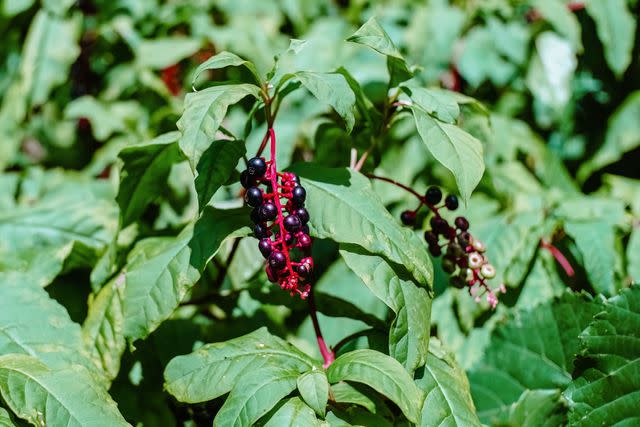Have You Heard Of Poke Salad? This Forgotten Southern Food Starts With A Weed
Southerners can make the best out of anything, even weeds.

Getty Images/PoppyB
Southerners have always been gifted at making the best out of anything, such as using leftover mashed potatoes to make old-fashioned potato candy. It’s a trait borne out of both a good attitude and stubborn resilience. We like to imagine that’s how a toxic weed that you can find throughout the South became a side dish, and while it might be forgotten amongst most people today, there was once an Appalachian delicacy known as poke salad.
What Is Poke Salad?
The dish is so-named because it is made with pokeweed, a pervasive green that can be toxic when ingested improperly. The recipe is also known as poke sallet (a French-derived word similar to salade) and polk salad (inspired by the country song “Polk Salad Annie”). Since pokeweed is especially prevalent in Southern Appalachia, the make-do recipe became a type of foraged staple for some, especially in rural and impoverished households.
For those familiar with the popular Appalachian dish “killed lettuce,” poke salad is similar in theory. While killed lettuce merely refers to tossing greens in a piping-hot dressing to warm and wilt the lettuce, poke salad requires actual cooking to turn the leaves into an edible side dish. Another similarity between the two regional recipes is the common use of bacon grease to dress the greens with major flavor. Bonus points if the bacon grease was grabbed from an old Crisco can on the kitchen counter. Killed lettuce uses hot bacon grease along with other ingredients to create a dressing, while poke salad is typically sautéed in the bacon grease after being twice-boiled.

Getty Images/Grace Cary
How To Make Poke Salad
Pokeweed can be foraged in many different places. Think beside the road, along ditches, surrounding fences, and basically anywhere where weeds tend to pop up. While the grown plant features maroon stems and berries (seen above), it’s advised to use the green leaves of a younger pokeweed during the spring when making poke salad.
After being boiled (many swear by boiling the leaves twice), the toxicity is gone and the wilted leaves are drained of the water and ready to be combined with bacon grease in a skillet. They are then often finished with salt, pepper, crumbled bacon, and any other seasonings. The final dish tastes akin to sautéed spinach or mustard greens with a subtle touch of bitter earthiness. In some households, it was common to combine the sautéed greens with eggs to make a hearty scramble.
Turning an unused weed into food on the table, poke salad can be considered amongst the ways that Southern home cooks once created sustenance out of cleverness, similar to the Depression pies that turned unexpected pantry staples into pies like Vinegar Pie and Soda Cracker Pie. Ingenuity that you can eat? The best kind.
Frequently Asked Questions
Can you eat pokeweed berries?
Pokeweed's toxicity increases as it matures, so berries, roots, stalks, seeds, and raw leaves should not be consumed. Boiling the leaves in water (often two times) is essential before consumption, but you should still avoid using leaves from mature plants.
Can you touch pokeweed with your hands?
When handling pokeweed, use protective gloves to prevent chemicals from passing through your skin, affecting your blood. Pokeweed toxicity increases as the plant matures, but you should always be careful when handling this plant.
For more Southern Living news, make sure to sign up for our newsletter!
Read the original article on Southern Living.

